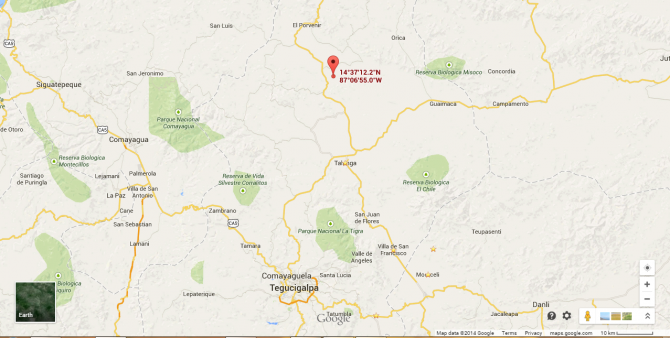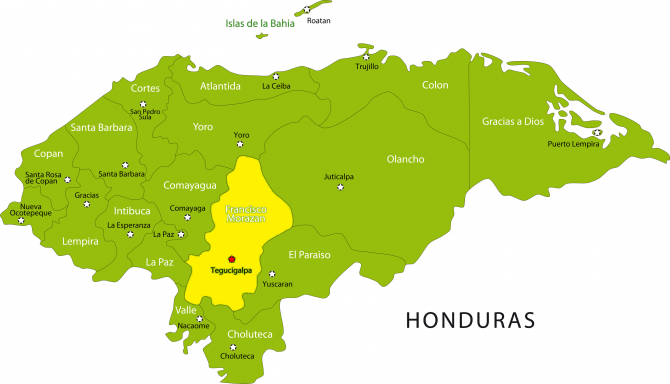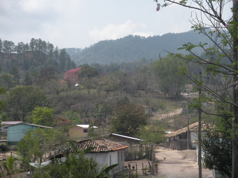Las Animas, Cedros, Honduras
![]()
![]()
![]()
![]()
![]()
![]()
![]()
![]()
![]() Click on Programs to learn more about their work in this community
Click on Programs to learn more about their work in this community
General Information
|
Population* |
120 |
| Number of homes | 45 |
| Avg # of people per home | 2.7 |
| Number and % of children |
(0-5yrs): 20/16.6% (0-9yrs): 38/31.6% |
| Principal Occupations |
Agriculture |
| Water System | Yes |
| Community Bank | No |
| % of Houses with Latrines | 80% |
| Electricity | Yes |
| Corresponding Health Center and Distance |
CESAMO-Cedros, 1.5 hours walking |
| Most Common Illnesses | Flu, hypertension |
| Municipality | Cedros |
| Department | Francisco Morazán |
| Distance from compounds | 2 hours |
* Population does not reflect how many patients will be seen on medical
brigades as many people from surrounding communities come seeking
Medical Brigades medical attention.
Top Three Needs Expressed
The top three needs expressed by the key community members are a lack of water particularly due to a faulty pressure pump, road infrastructure, health education on nutrition and hygiene.


Las Animas, Cedros is located near the municipality of Cedros in the department of Francisco Morazan. Although a main highway runs through Cedros, Las Animas is located far away from the road and there is no public transportation that allows them access to main roads.
Las Animas’ educational system includes Kinder and Primary schools (until 6th grade). There are 20 studnets in kindergarten and 44 students, in primary school, totaling 64 students. Herman Torres is the school director. It is estimated that about 75% of the community knows how to read and write. 13 adults are currently learning taking literacy classes.
Las Animas has a water system that was recently re-constructed during 2005-2008, however the water pump broke within a few months of use and now water no longer arrives to homes. About 95% of homes in Las Animas are connected to the water system, though the water is not being chlorinated. This means that it is on community members to purify their drinking water at home, which many may not do. Due to the current issue with the pressure pump, most people go and collect water directly from the river source. There is a Water Council with 5 active members and Lourbin Medina is a key leader on the council.
Las Animas does not have a health center in the community. The nearest health center is in Cedros, about a 1.5-hour walking distance. There is no bus that goes between Las Animas and Cedros, therefore most everyone must walk. There is no basic sanitation committee and dental care is not available in the community.
The most common illnesses seen by community members are the flu, malnutrition, and diarrhea. Approximately 80% of the community is estimated to have latrines that currently function. 0% has eco-stoves (estufas justas). About 10% is estimated to have cement floors and 70% to have pilas (water storage units).
The average family income per month is estimated to be 2500 Lempiras, which is approximately L500 (US $26.47) per person. About half the homes are made of adobe and the other half is bahareque (sticks and mud). The main form of employment is agriculture on both owned and rented land, and the main products that are cultivated in the community are corn and beans. Members of Las Animas have little to no access to credit from outside lenders, and they do not have a community bank. In 2007, PRONADEL helped to train a community bank to manage water payments, however when they confronted the water pump problem, the community bank dissolved.
Las Animas is not currently receiving medical brigades from any organization other than Global Brigades. PLAN assisted with the construction of the school and Project LUPE provided school materials in 2002. PRONADEL supported the formation of the community bank in 2007, which later dissolved.
Check back soon for more photos of this community!
